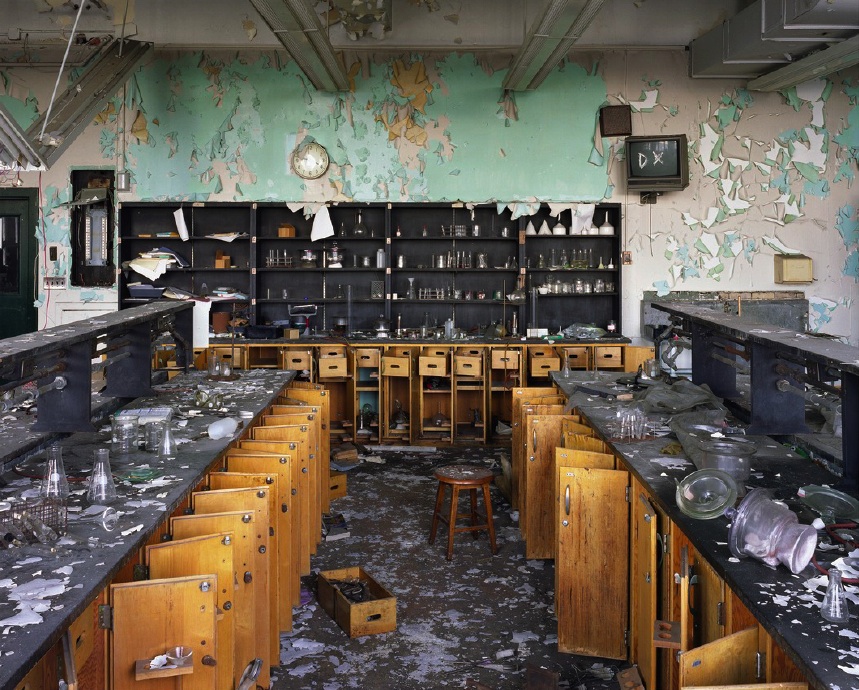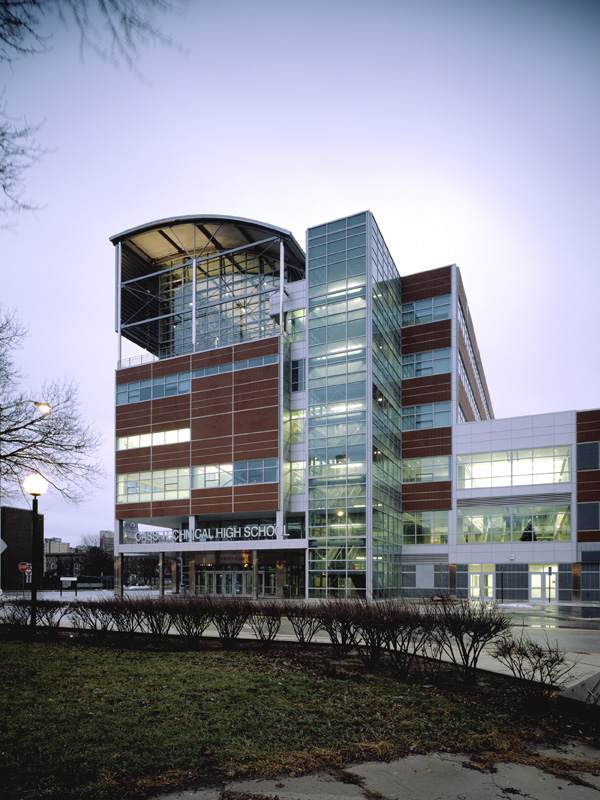I had the opportunity to see the film Detropia last Friday (it's showing at The Charles Theater for the next week I believe). It's been here before (it played during the Maryland Film Festival) but I missed it. The trailer:
DETROPIA Trailer from Loki Films on Vimeo.
Detropia seeks to tell a triple-layered story, of Detroit the city, of the American rustbelt city post-Crisis, and of her residents. I think the work will find purchase the same way the directors' last work found purchase. But I don't believe the movie is worth the accolades it has received. Largely because it does little to deconstruct the ruin-porn viewpoint that already defines the city.
We see this as early as the first few scenes, where we see Detroit videoblogger Crystal Starr navigate the ruins of what appear to be (based on location) Cass Technical High School–Diana Ross' alma mater (and incidentally, my sister's as well), walking through the auditorium, making her way up to the rooftop overlooking downtown. The choice of Starr as tour guide is inspired in as much as it allows the film-makers to semi-dodge the sticky issue of racial voyeurism. And this narrative of decay is repeated throughout, whether we are talking the physical decay represented by the ruins (and of course no Detroit ruin-porn documentary would be complete without a visit to the train station) or the social decay represented by the death of the automotive industry. The major characters they follow, Starr, George McGregor President of Local 22 tasked to save jobs, Tommy Stevens owner of the Ravens Bar and Lounge, are fairly fleshed out. We see them struggle valiantly to sustain themselves and the people they work with (Stevens and McGregor more than Starr given their positions and age). And we see them think through the devastation–they understand exactly what they're facing even if they have to brave the devastation with a put-on "happy" face.
Further, by juxtaposing the scenes of decay with images of Detroit's Opera House, the film-makers attempt to show some of the contradictions embedded in the city. And they enhance these contradictions with expert voice-overs who talk clearly about how Detroit happened.
Finally we see Mayor Dave Bing struggling with the fiscal challenges brought about by demographic (and geographic) realities. And as Dave Bing looks to shrink the city in order to provide services more efficiently, we see resident push-back. The same type of push-back the members of Local 22 engage in–push-back likely to fail horribly given the forces arrayed against them.
But they don't go dig deep enough.
I'm going to go back to Cass Tech.
Based on the film, this is what you'd expect Cass Tech to look like:

And yes, it does. But that's the OLD Cass Tech.
The new one? The one RIGHT NEXT DOOR?

Think about that. Every documentary leaves dozens of hours on the cutting room floor in order to enhance the central narrative. And every documentary maker has to make decisions about what to cut and what to leave in. Here they made a tactical decision to focus on the ruins even though its new gleaming successor is right next door.
They do examine tendrils of political resistance–but only tendrils. We see the members of Local 22 fight to reclaim a fifties/sixties era vision of Detroit manufacturing. We see the brothers talking shit on their porch. We see the sister tell Mayor Bing she won't tolerate the cuts to the city. We don't have any sense something like Detroit Summer exists. Or the Allied Media Conference. Or Detroit Digital Justice.
Understand that I'm not asking for a "positive" image of Detroit to counteract the "negative" image presented by the ruin-porn industry. But I'm reminded of Something Something Something. Detroit isn't simply one city, one space. It's several spaces layered over, next to, within, and through each other. In The City and The City, China Mieville tells the story of two cities literally existing within the same geographic space but operating on subtly different dimensional planes–through magic the denizens of one city are able to "unsee" the other (and vice-verca).
By focusing on a set of tropes the viewer is already familiar with (ruin porn? check. ruined auto industry? check. shrinking city? check. white hipster artists? check.) the film-makers miss an EXCELLENT opportunity to examine Detroit's multi-hued, multi-layered, terrible glory. It's an absolutely beautiful film, littered (so to speak) with sparse impressionistic shots.
I'll be damned though if I didn't come out of that film wishing they'd done a hell of a lot more than what they did.
So glad there's Imaging Detroit.
How that new Train Station looking?
Great!! Lol
Sent from my iPad
Lester, next time you go “back to Cass Tech” you’ll be met with the shocking reality that it’s a parking lot. That’s right, a brilliant 1930’s Albert Khan master piece was leveled during the summer of 2011. It wasn’t turned into residential lofts, it wasn’t repurposed to accommodate the influx of new residents which will “bring Detroit back”, instead the city paid Hommerich Demo company 1.4million to level it, books and computers included. Is that the kind of leadership that screams Detroit is on it’s way back? There’s a snap shot of mutli layered terrible glory for you.
I go back a few times a year. I was there most recently in June/July. I’ve seen the parking lot.
Lester Spence :: Associate Professor, Political Science, Johns Hopkins University :: https://lesterspence.com :: protocol.by/lks
Yes. You said it. “Detroit isn’t simply one city, one space. It’s several spaces layered over, next to, within, and through each other.” Helpful links, Lester. Thank you for writing this – – –